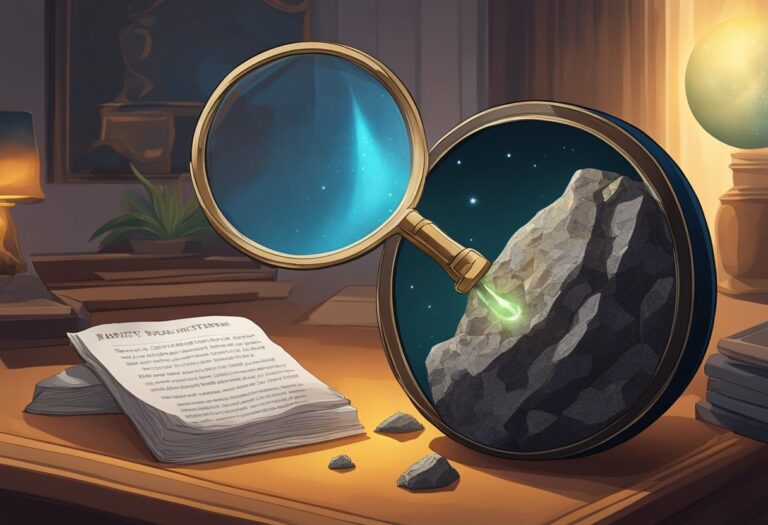When gazing into the night sky, you might find yourself drawn to the fascinating constellation of Gemini.
Named after the celestial twins Castor and Pollux from Greek mythology, Gemini is notable for its two bright stars that represent the heads of the twins. This constellation is rich in both history and stellar phenomena, sitting prominently in the northern celestial hemisphere and easily identified between the constellations of Taurus and Cancer.
Gemini, not just steeped in mythological significance, is also a hub of scientific investigation. Astronomers closely study this constellation, probing the properties of its various stars, from their chemical compositions to their behavior within the galaxy. Additionally, Gemini boasts intriguing deep sky objects that captivate both professional astronomers and amateur stargazers alike.
The range of celestial sights includes star clusters and distant galaxies that are observed using advanced telescopes like those at the Gemini Observatory.
The Gemini constellation, representing twins Castor and Pollux, shines brightly in the northern celestial hemisphere. Notable for its mythological roots and scientific interest, it features diverse stars and deep sky objects, making it a focal point for both stargazing and research.
The Gemini Constellation
The Gemini Constellation is a significant and recognizable group of stars that is notable for its mythological significance and navigational utility for both amateur stargazers and professional astronomers.
Mythological Background
In Greek mythology, Gemini is associated with the twin brothers Castor and Pollux, known collectively as the Dioscuri. Castor was the mortal son of Tyndareus, the king of Sparta, while Pollux was the divine son of Zeus. When Castor died, Pollux was so grief-stricken that he asked Zeus to let him share his immortality with his brother, leading them to alternate between the underworld and Olympus, and eventually being placed in the sky as stars.
Location and Visibility
You can locate the Gemini Constellation in the Northern Hemisphere, and it is especially prominent during winter and early spring months. The constellation is bordered by Taurus to the west and Cancer to the east, with Orion and Auriga to the south and Canis Minor to the southeast. Its brightest stars, Castor and Pollux, serve as a reference point to find it in the night sky.
- Right Ascension: 7 hours
- Declination: 20 degrees
- Visibility: Best seen in February
At a glance, the Gemini Constellation provides both historical richness and celestial guidance, marked by Castor and Pollux’s stars that blaze brightly in the winter sky.
Bright Stars in Gemini
In the Gemini constellation, some of the brightest stars carry significant historical and astronomical importance. You’ll find these stellar beacons interesting both in their unique characteristics and mythology connections.
Pollux
Pollux is the brightest star in the Gemini constellation. It’s an orange-hued giant star situated approximately 34 light-years from Earth. Pollux stands out not just for its brightness but also for being an evolved star that has exhausted the hydrogen at its core.
Castor
Castor, although slightly dimmer than Pollux, is actually a complex star system composed of six stars organized in three binary pairs. For you as an observer, Castor appears as a single point of light, but it’s much more intricate when studied through high-resolution telescopes.
Alhena
Alhena, the third-brightest star in the constellation, is noted for its rapid rotation. It is a blue-white giant star located about 109 light-years away. It’s known as the shining “Proudly Marching One” in Arabic folklore.
Wasat
Wasat, a dimmer yet interesting star system, consists of a binary star—one component being a subgiant and the other a dwarf star. Found at the midpoint between Castor and Pollux, Wasat is approximately 59 light-years distant from your vantage point on Earth.
Deep Sky Objects in Gemini

When you gaze into the constellation Gemini, you’ll find more than just the famous twin stars Castor and Pollux. The region is also home to several deep sky objects, including open clusters and planetary nebulae, which offer intriguing targets for amateur astronomers and astrophotographers.
Gemini Cluster
The Gemini Cluster, also known as NGC 2158, is an open cluster that lies about 16,000 light-years from Earth. This is an older cluster, characterized by its tightly packed, faint stars. It’s best viewed with a small telescope, which will reveal its rich density and allow you to distinguish it from the younger and closer cluster M35 that is often viewed in conjunction.
Medusa Nebula
Named for its resemblance to the mythical Gorgon’s snaky hair, the Medusa Nebula (Abell 21) is an old planetary nebula found within Gemini’s boundaries. This ghostly cloud of expanding gas is what remains of a Sun-like star that shed its outer layers. Due to its low surface brightness, observing the Medusa Nebula can be challenging, and thus it is better appreciated through long-exposure photographs that reveal its intricate structures.
Astrological Significance
In astrology, Gemini is linked to communication, intelligence, and adaptability. The Gemini stars mirror these traits in your personal horoscope.
Zodiac Characteristics
- Gemini dates: May 21 – June 20
- Element: Air
- Quality: Mutable
- Ruling Planet: Mercury
When analyzing a Gemini’s place in astrology, it’s clear that communication is a defining feature. Your Gemini sign is thought to endow you with verbal dexterity and intellectual agility. This stems from Mercury, the planet synonymous with information exchange and movement. Your mutable quality ensures that adaptability and versatility are among your strongest assets.
- Key Traits:
- Curious
- Affable
- Eloquent
- Versatile
- Intellectual
These characteristics manifest in your daily life, influencing your interactions and decision-making processes.
Historical Influence
The Gemini constellation has a storied past, with a deep historical presence in mythologies worldwide. Its twin stars, Castor and Pollux, represent the legendary Dioscuri, known for their brotherly love and martial prowess. Throughout history, these stars have symbolized duality and partnership.
Astrologically, the significance attributed to Gemini and its stars has evolved. From the ancient belief in astrology as a form of divination to its modern-day use as a psychological tool, Gemini’s historical influence is evident in both its astrological and cultural relevance.
- Cultural Significance:
- Castor and Pollux in mythology
- Influence on Renaissance art
- Astrological use in navigation
Your understanding of Gemini’s historical significance can enrich your appreciation of its impact on astrology and culture.
Scientific Research
In the field of astronomy, scientific research plays a vital role in unveiling the complexities of the universe. Your understanding of the cosmos is enhanced by the meticulous study of star formations and the mechanisms governing their behavior.
Stellar Evolution Studies
Astrophysical research frequently examines the lifecycle of stars to gain insights into their births, transformations, and eventual demise. Gemini Observatory has been instrumental in this realm, providing valuable data on topics such as the inhomogeneous mixing in low star formation environments. For instance, studies on the Triangulum II galaxy shed light on the chemical peculiarities of its stellar population, informing theories on stellar evolution.
Binary Systems Analysis
Binary systems, composed of two stars orbiting a common center, are goldmines of scientific information. Analysis of these systems can reveal the mass, luminosity, and orbital properties of stars, contributing to broader astrophysical theories. Using facilities like Gemini, researchers have been able to study, in detail, binary systems and how they influence the dynamic processes within galaxies. This includes dissecting the light spectra of stars, as Gemini’s powerful spectrographs permit a deeper understanding of stellar compositions. For example, insights from the spectroscopy of 12,000 K white dwarf stars have profound implications on our comprehension of binary system evolution and white dwarf characteristics.
Frequently Asked Questions
In this section, you’ll find answers to common queries about the Gemini constellation, from its prominent stars to its place in mythology and best viewing times.
What are the major stars that comprise the Gemini constellation?
The Gemini constellation is primarily known for its two bright stars, Castor and Pollux, which represent the heads of the twins. Other notable stars include Alhena, Wasat, and Mebsuta.
What is the significance of the Gemini constellation in astrology?
In astrology, Gemini is the third sign of the zodiac, symbolizing duality, communication, and intellectual curiosity. It is associated with versatility and often represents individuals born between May 21 and June 20.
Which star is the brightest in the Gemini constellation?
Pollux is the brightest star in the Gemini constellation. It is an orange-hued giant star situated approximately 33 light-years from Earth.
Can you explain the mythology behind the Gemini stars?
The Gemini constellation is linked to the mythical Greek twins Castor and Pollux, known as the Dioscuri. According to legend, they were half-brothers and had a strong bond, which the constellation commemorates.
How can you locate the Gemini constellation in the night sky?
You can locate the Gemini constellation by finding its two brightest stars, Castor and Pollux, which are noticeable for their proximity to each other. Forming a line through the Orion Belt to the right will guide you to these stars.
What is the best season and time to observe the Gemini constellation?
The ideal season to observe the Gemini constellation is during winter and early spring. The constellation is most visible in the evening sky from February to April, best observed shortly after sunset.







